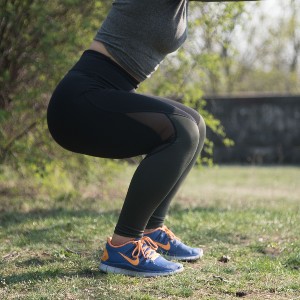Comments on: Electromyographic signature of isometric squat in the highest refuge in Europe

HTML: 2
All claims expressed in this article are solely those of the authors and do not necessarily represent those of their affiliated organizations, or those of the publisher, the editors and the reviewers. Any product that may be evaluated in this article or claim that may be made by its manufacturer is not guaranteed or endorsed by the publisher.
We read with particular interest the study by Rua et al. (Eur J Transl Myol 33 (3) 11637, 2023 doi: 10.4081/ejtm.2023.11637) on the electromyographic (EMG) activity of the quadriceps muscle during squat at high-altitude. It offers interesting insights into how neural factors might alter muscle function during a multi-joint low-intensity motor task with sustained contraction after trekking under hypoxic conditions. However, the methodological processes and procedures used in the study could bias the interpretation of the outcomes. Therefore, we outline the procedural considerations that should be taken into account in further studies aimed at investigating the potential changes in quadriceps EMG activity during the squat as a result of trekking at high-altitude.
Ruggiero L, Harrison SWD, Rice CL, McNeil CJ. Neuromuscular fatigability at high altitude: Lowlanders with acute and chronic exposure, and native highlanders. Acta Physiol (Oxf). 2022 Apr;234(4):e13788. Epub 2022 Jan 25. PMID: 35007386; PMCID: PMC9286620. DOI: https://doi.org/10.1111/apha.13788
Katayama K, Yoshitake Y, Watanabe K, Akima H, Ishida K. Muscle deoxygenation during sustained and intermittent isometric exercise in hypoxia. Med Sci Sports Exerc. 2010 Jul;42(7):1269-78. PMID: 20019635. DOI: https://doi.org/10.1249/MSS.0b013e3181cae12f
Torres-Peralta R, Losa-Reyna J, González-Izal M, Perez-Suarez I, Calle-Herrero J, Izquierdo M, Calbet JA. Muscle activation during exercise in severe acute hypoxia: role of absolute and relative intensity. High Alt Med Biol. 2014 Dec;15(4):472-82. PMID: 25225839; PMCID: PMC4273184. DOI: https://doi.org/10.1089/ham.2014.1027
Rua R, Bondi D, Santangelo C, Pignatelli P, Pietrangelo T, Fulle S, Fanelli V, Verratti V. Electromyographic signature of isometric squat in the highest refuge in Europe. Eur J Transl Myol. 2023 Sep 12. Epub ahead of print. PMID: 37700736. DOI: https://doi.org/10.4081/ejtm.2023.11637
da Silva CR, de Oliveira Silva D, Briani RV, et al. Test-retest reliability of electromyographic signal parameters used to evaluate neuromuscular fatigue in quadriceps femoris muscle. Kinesiology. 2016;48(2):174–81. DOI: https://doi.org/10.26582/k.48.2.14
Mitsuya H, Nakazato K, Hakkaku T, Okada T. Hip flexion angle affects longitudinal muscle activity of the rectus femoris in leg extension exercise. Eur J Appl Physiol. 2023 Jun;123(6):1299-1309. Epub 2023 Feb 16. PMID: 36795130. DOI: https://doi.org/10.1007/s00421-023-05156-w
Papagiannis GI, Triantafyllou AI, Roumpelakis IM, Zampeli F, Garyfallia Eleni P, Koulouvaris P, Papadopoulos EC, Papagelopoulos PJ, Babis GC. Methodology of surface electromyography in gait analysis: review of the literature. J Med Eng Technol. 2019 Jan;43(1):59-65. Epub 2019 May 10. PMID: 31074312. DOI: https://doi.org/10.1080/03091902.2019.1609610
Copyright (c) 2023 the Author(s)

This work is licensed under a Creative Commons Attribution-NonCommercial 4.0 International License.
PAGEPress has chosen to apply the Creative Commons Attribution NonCommercial 4.0 International License (CC BY-NC 4.0) to all manuscripts to be published.


 https://doi.org/10.4081/ejtm.2023.11846
https://doi.org/10.4081/ejtm.2023.11846



